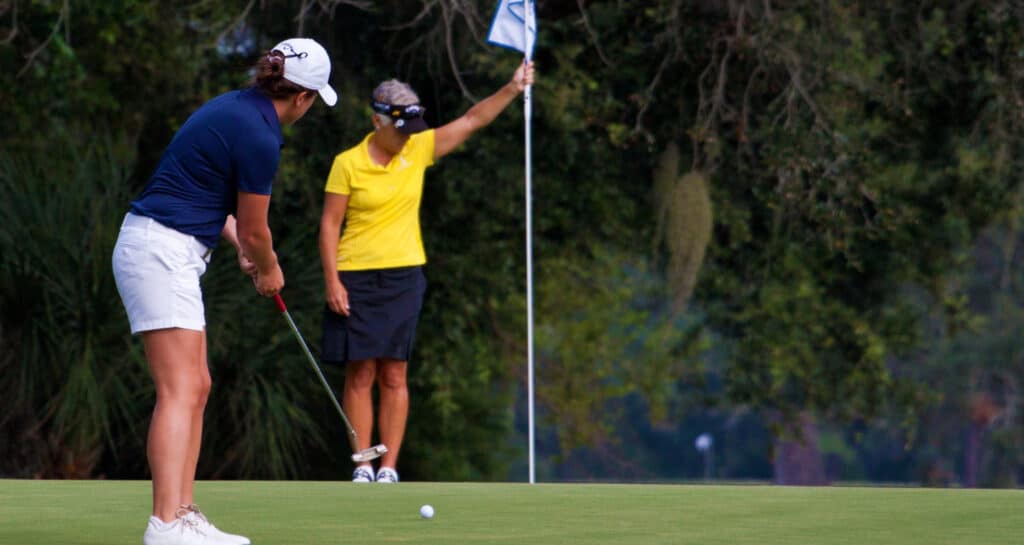
In this article I want to touch on something that can cause a lot of frustration on the course – Pace of Play, or rather, how to avoid slow play!
The issue of Pace of Play has been in the news lately and was brought about by the seemingly very slow pace that Patrick Cantlay played at during the recent Masters tournament. I have also seen a few videos of altercations on golf courses (and yes, it happens all over the world!) and in all the cases the fights broke out because of slow play and frustrations that boiled over – maybe also because I am yet to find a player that will acknowledge that he or she plays slowly!
Why is pace of play even an issue in golf?
Why do players get chased and told to hurry up while playing a round?
the answer
There are a few reasons why there are pace of play guidelines and times established for a fourball to finish a round of golf.
On an individual basis, it has to do with the very important underlying principle in golf, namely, that every player is treated exactly the same and that the rules are fairly applied to everyone and every player thus get the same time to complete a shot and eventually a round of golf. Furthermore, The R&A conducted a survey in 2015 amongst 56 000 golfers and 60% of them stated that they will enjoy their golf more if they can play faster and complete a round at the given time! (And, Mr Golf Club Manager, they also stated that they will be at the club house earlier and then spend more money on food and drinks!)
Unfortunately, as many golfers will know, it is not so easy to eradicate slow play. There are many factors that need to be addressed – even before we get to helping an individual slow player. I want to focus on players, but we also need to identify what clubs can do to make sure that there are no or few obstacles for players to proceed quickly on a course.
THE FOLLOWING SHOULD BE IN PLACE:
- Make sure that the course itself is ready to play fast golf. Any areas of confusion must be eliminated and players will know exactly how to proceed when confronted with an issue. This means that all markings, stakes, local rules, etc must be correct and clearly identifiable. Committees may also wish to mark certain (bushy) areas on the course as red penalty areas – this will limit time for searching for balls and allow a player to take a drop and play on.
- There must be a Pace of Play policy and indicated times for a fourball to complete 9 holes, 18 holes, time spent in halfway, etc. Players must be aware of these times and must realise that it will be monitored. On any normal course, it should not be more than 4 hours 15/20 minutes (including time for halfway).
- Let marshals drive on the course and help players to keep to the allocated times. They must have tee sheets, times per hole and speak to players that have fallen behind these times.
- Starters must make sure that they keep to tee-off times and not let a group tee off when the group ahead has played their second shots. By sticking to the times (usually 8-minute gaps, although 10 minutes for a fourball is recommended) we ensure that there is a better flow on the course. Also, after going through halfway, a group must tee-off with an 8-minute gap – otherwise the field will just bundle up quickly.
- Talking about halfway, there must be a strict time policy enforced. This is not the time to sit down for a cooked meal, nor should the break be longer than 10 minutes. Clubs should run their halfway offerings more like a grab-and-go facility – have pre-made food ready, like sandwiches, pies, etc, so that players can get away quickly, (and let them have pizzas and other meals after completing the round!).
Pace of Play Policies
All the major professional tours have very stringent pace of play policies and each tournament will have a detailed timing schedule for the specific course. Referees will monitor these times and quickly intervene when a group is falling behind. There are also individual times allowed per shot – suffice to say that a player gets on average 40 seconds to complete a shot. This time is taken from when it is his turn to play, the fairway or green ahead is clear and he should play his shot. If he walks around to get distances or, when putting, still walks up and down to read a putt, this is included in the 40 seconds. (Trust me, once you start timing a player, he or she easily stays within these limits!).
HELPING THE LOCAL PLAYER
We obviously do not have these times and individual timing at club level, so how can we help a local player playing at our club to speed up?





